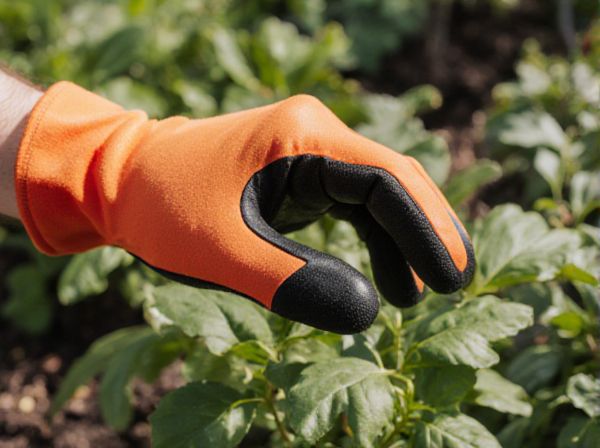
Seed viability vs Seed dormancy Illustration
Seed viability refers to the ability of a seed to germinate and develop into a healthy plant under favorable conditions, indicating its potential for successful growth. Seed dormancy, on the other hand, is a natural state preventing seeds from germinating even when conditions are suitable, serving as a survival mechanism to delay growth until environmental cues are optimal. Understanding the balance between seed viability and dormancy is crucial for effective seed storage, propagation, and agricultural planning.
Table of Comparison
| Aspect | Seed Viability | Seed Dormancy |
|---|---|---|
| Definition | Ability of seed to germinate under optimal conditions | State in which seeds delay germination despite favorable conditions |
| Purpose | Ensures successful seed germination and plant development | Prevents germination until environmental or physiological cues are met |
| Measurement | Germination percentage in controlled tests | Period or conditions seed remains inactive |
| Influencing Factors | Seed age, storage, moisture, temperature | Hormones (ABA), seed coat, environmental triggers |
| Effect on Germination | Directly affects potential for sprouting | Delays germination despite viability |
| Practical Use | Seed quality assessment for agriculture | Seed treatment strategies to break dormancy |
Understanding Seed Viability
Seed viability refers to the seed's ability to germinate and develop into a healthy seedling under suitable conditions, which is crucial for successful crop production and biodiversity conservation. Factors influencing seed viability include genetic quality, moisture content, storage temperature, and seed age, with viability typically declining over time if improperly stored. Understanding seed viability helps optimize storage techniques and predict germination rates, distinguishing it from seed dormancy, which is a temporary state preventing germination even when viability remains intact.
Defining Seed Dormancy
Seed dormancy is a physiological state in which seeds are prevented from germinating even under favorable environmental conditions, ensuring survival during adverse periods. It differs from seed viability, which refers to the seed's ability to germinate successfully when dormancy is broken. Dormancy mechanisms include physical, physiological, and morphological factors that inhibit germination until specific cues, such as temperature changes or scarification, are encountered.
Key Differences: Viability vs Dormancy
Seed viability refers to the seed's ability to germinate and develop into a healthy plant under favorable conditions, indicating its life potential and metabolic activity. Seed dormancy is a physiological or morphological state that temporarily prevents germination even when conditions are suitable, acting as a survival mechanism. The key difference lies in viability indicating potential for growth, whereas dormancy involves an inherent delay in initiating germination despite viability.
Factors Affecting Seed Viability
Seed viability depends on intrinsic factors such as seed moisture content, temperature, and storage conditions, which influence the seed's ability to germinate successfully. Environmental stressors like humidity fluctuations and exposure to pathogens accelerate deterioration, reducing seed longevity. Unlike seed dormancy, which involves physiological or morphological barriers delaying germination, seed viability strictly measures the seed's potential to remain alive and capable of growth.
Causes and Types of Seed Dormancy
Seed viability refers to a seed's ability to germinate and develop into a healthy plant, while seed dormancy is a natural state preventing germination despite viability. Causes of seed dormancy include physiological factors such as growth inhibitors and underdeveloped embryos, physical barriers like hard seed coats, and combinational dormancy involving both internal and external constraints. Types of seed dormancy are physiological dormancy, morphological dormancy, physical dormancy, and combinational dormancy, each influenced by environmental conditions and genetic traits that regulate the timing of germination.
Testing Seed Viability at Home
Testing seed viability at home involves simple methods such as the water test, where seeds that sink are generally viable while floating seeds are less likely to germinate. Another common technique is the paper towel test, which requires placing seeds between moist towels in a warm area and monitoring for sprouting within a week. Understanding the distinction between seed viability, the seed's potential to germinate, and seed dormancy, a natural delay in germination, helps gardeners optimize planting schedules for successful crop growth.
Methods to Break Seed Dormancy
Seed viability determines a seed's potential to germinate under optimal conditions, while seed dormancy prevents germination even when conditions are favorable. Methods to break seed dormancy include physical scarification, chemical treatments like gibberellic acid application, and stratification involving exposure to cold or moist conditions. These techniques enhance germination rates by overcoming physiological or physical barriers within the seed coat or embryo.
Storing Seeds for Maximum Viability
Seed viability refers to the seed's ability to germinate and develop into a healthy plant, which decreases over time due to metabolic degradation. Seed dormancy is a survival mechanism preventing germination under unfavorable conditions, often requiring specific treatments like stratification or scarification to break. Storing seeds in cool, dry, and dark environments significantly extends viability by slowing metabolic processes and reducing moisture-induced damage, ensuring maximum germination rates when sown.
Common Myths About Seeds and Dormancy
Common myths about seeds often confuse seed viability with seed dormancy, leading to misconceptions that all non-germinating seeds are non-viable. In reality, seed viability refers to the seed's ability to germinate under ideal conditions, while seed dormancy is a natural state where seeds delay germination until environmental factors become favorable. Understanding this distinction helps prevent the premature disposal of viable seeds that require specific treatments, such as stratification or scarification, to break dormancy and ensure successful growth.
Practical Tips for Gardeners
Seed viability refers to the ability of a seed to germinate and develop into a healthy plant, while seed dormancy is a natural state that prevents seeds from germinating even under favorable conditions. Gardeners can improve germination rates by testing seed viability using methods like the water float test or germination trays, and breaking dormancy through techniques such as scarification, stratification, or soaking seeds in water. Proper storage in cool, dry environments extends seed viability, ensuring successful planting seasons and robust garden growth.
Seed viability vs Seed dormancy Infographic

 gardendif.com
gardendif.com